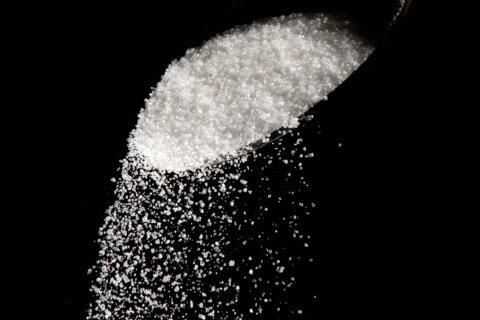WASHINGTON — The next time you pour a glass of milk, order a cup of coffee or spread butter on your bagel, be thankful it’s 2018 and not the 19th century.
Back then, it was common for milk to be cut down with water, dyed with plaster dust, topped with pureed calf brains and preserved with formaldehyde — yes, the same chemical that’s used to embalm corpses.
Coffee might have been a mixture of sawdust and beets, charred black to resemble the real deal.
And butter? It was frequently blended with 20 Mule Team Borax to extend its shelf life. If its hue wasn’t golden enough to pass as a quality product, companies colored it with lead.
The same was done for cheese — and because labels were not required, consumers had no idea what they were ingesting.
“It is sort of a balance between disgust and alarm when you’re looking at 19th century food,” said Deborah Blum, author of “The Poison Squad: One Chemist’s Single-Minded Crusade for Food Safety at the Turn of the Twentieth Century.”
“But there was a lot of incentive to do that; it’s hugely lucrative to have this long-lasting product that is pretend milk. … So you see the use of both poisonous materials and fakery, and not just in these products, but in other products in a completely permissible, go-for-it, you-can-make-yourself-richer-doing-it kind of way.”
Blum, who is also the director of the Knight Science Journalism Program at MIT, said it wasn’t until the 1880s that people really started questioning what was in their food — after it had sickened and killed thousands. One person leading the charge in this culinary crusade was chemist and United States Department of Agriculture employee Harvey Washington Wiley.
In 1902, Wiley received funding for an experiment to test the safety of food additives and preservatives — and he did so on human subjects. In her book, Blum details Wiley’s experiment on the group of volunteers he recruited and named the Poison Squad.
Volunteers on this squad were promised three chef-prepared meals a day, seven days a week. The catch? Half of the volunteers ate just the meals, the other half ate the meals and took a capsule of whatever preservative or additive Wiley was concerned with at the time. The whole experiment took place around a dining table in the basement of the USDA building.
Wiley started testing with borax, and Blum said that’s because he thought it would be the safest.
“And to his shock, and to the shock of newspaper readers across the country — because this experiment gets huge coverage — they start getting really sick,” Blum said about the Poison Squad.
“And then he does formaldehyde and people get sicker. And then he does salicylic acid which is in all kinds of foods, and people get sicker.”
Wiley’s experiment sparked a “rising wave of anger from people who realize they’re being poisoned by their food,” and it eventually led to the nation’s first consumer protection law, the 1906 Food and Drug Act.
But even with a new rule in place, Blum said it didn’t necessarily mean ultimate regulation.
“It (was) immediately corrupted in this very close relationship between big and powerful business and big and powerful people in government. You start to see that law undermined almost from the beginning, and because of that, that sets a kind of foundation for the way we regulate,” Blum said.
“The public part of it is consumer protection and the behind-the-scenes part is this negotiation between government and business that we still see today.”
In many ways, Blum sees Wiley’s work as a cautionary tale. She said modern food regulations are not as strong as Wiley thought they should be. Even today, common ingredients permitted in the U.S. are banned in other countries.
And fakery still persists: imperfect extra-virgin olive oil is a recent example of this.
“This is a reminder; these are hard protections. It took us decades to get them then. We need to stand up and fight for them now,” Blum said.
Hungry for more? “The Poison Squad” is now available wherever books are sold.







